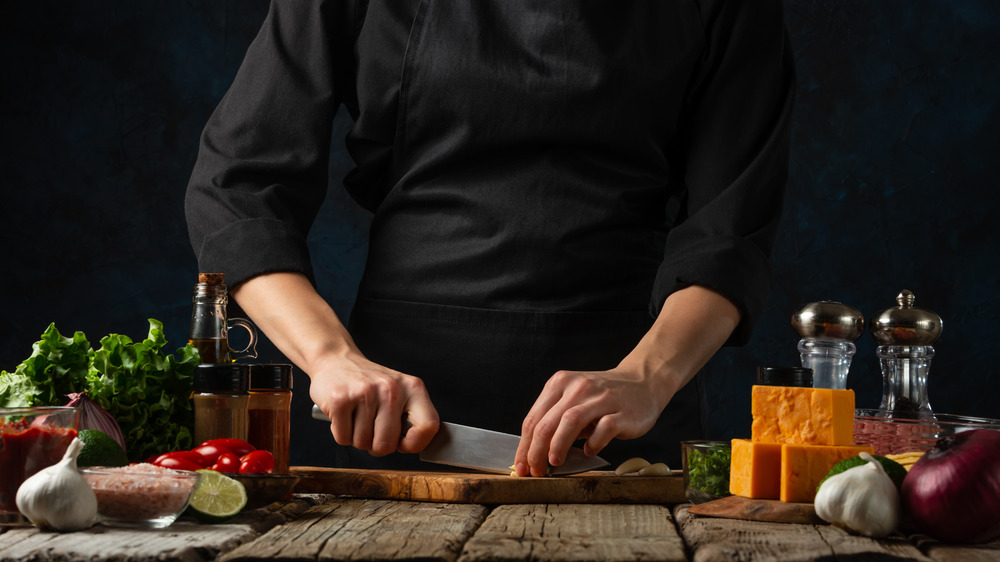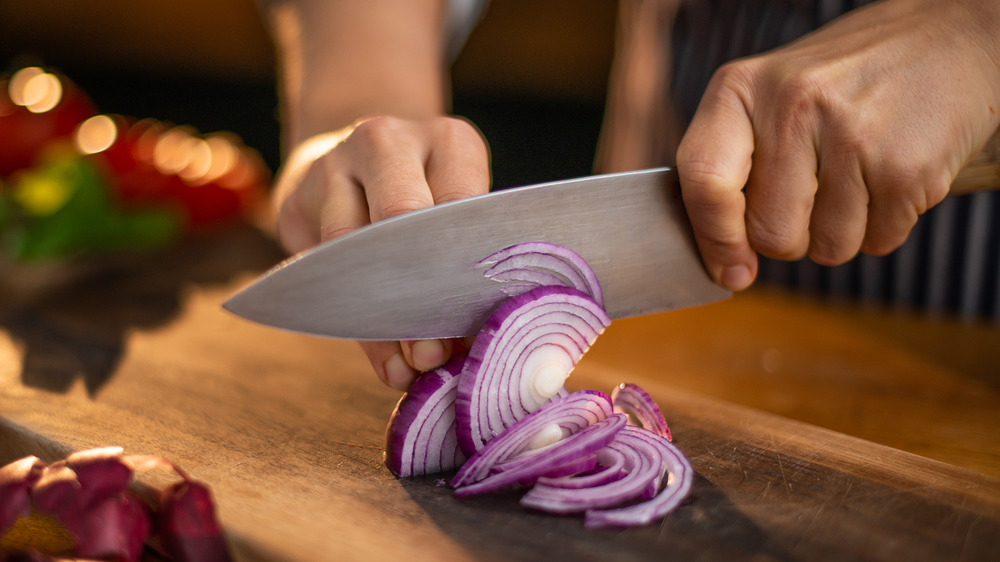You've Been Holding Your Kitchen Knife All Wrong
Dinner time roll call: cutting board, check. Veggies? Check. Kitchen knife? Check. But wait — before you start dicing, mincing, or chopping, maybe you should start by brushing up on your knife-holding skills.
Wait again — before you really get started, note that none of the following tips will help if your cutting board is wobbly. To remedy this, Kitchn recommends placing a damp cloth underneath to prevent slipping or injuries. Remember: you should move — not your cutting surface.
While Fine Cooking reminds readers the best way to hold a knife is the way that allows you to work comfortably, the website does offer a few tips for the knife-wielding public. The outlet recommends that you "choke up" a little on the handle, which means to place your thumb on the blade to steady it. Your index finger should rest comfortably on the other side. Yeah, it's going to feel a little weird at first. Try to think of your fingers as stabilizers, holding the knife in place; then allow the handle to rest comfortably in the fleshy part of your palm. Starting to feel better already.
Protect your fingers
Before you start cutting, place your knife down and use the index and middle finger of your opposite hand to 'walk' along the cutting board. See how your fingers naturally curl? Bon Appétit calls this "The Claw." That's how you are going to hold the food you plan to cut — with a firm, yet gently curved grip. Holding your had in this way allows your fingertips to avoid the knife blade, keeping your hands harm-free.
Still need help? Spoon University offers a handy gif tutorial on using your kitchen knife properly. One trick they suggest is to try to use a gentle rocking motion while cutting, pushing the food towards your knife. (Remember when you were little and you pretended to be a choo-choo train? That motion where your arms crooked and you made little circles? Mimic that motion when you cut.) Follow all these tips and you'll be a pro in no time!

